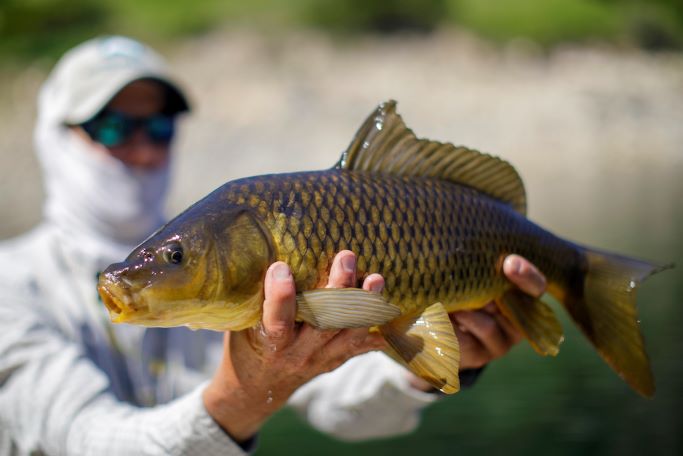
Each year, nearly one million people travel to experience fly fishing in the State of Montana. One of the most popular destinations is the Bighorn River known for large populations of prized trout species. On the Bighorn River, the stretches in the tailwaters of the Yellowtail Dam create the perfect environment for trout fly fishing.
Large concentrations of fish have been recorded up to 3,000 to 5,000 fish per mile in some parts of the river. There are two main types of trout that can be found in the Bighorn River – brown and rainbow trout. Cutthroat trout are more elusive and less common, being found only in smaller tributaries and streams that flow into the main river.
In this article, we’re going to cover some of the best practices to help you get the most out of your trout fly fishing trip including when to fish, what flies to use, and the best ways to prepare the trout you take home.
Best Practices When Fly Fishing for Trout
Part of what makes trout fly fishing so exciting is the challenge. Trout tend to be more skittish and selective of the bait they are presented with. Catching a prize trout requires patience, the right equipment, and skillful techniques.
To improve your chances of finding and catching trout on the Bighorn River, you need to go fishing at the right time. While you can technically catch trout year-round, the best time to go is during the spring when trout are the most active and aggressive following the colder months. The summer and fall are also great times when there is a peak number of hatches. Despite what season you choose for your fishing trip, fly fishing during the early morning and late afternoon are generally the best time of day for trout. During these times, the sun is lower in the sky which makes it easier to spot rising fish and more difficult for trout to see you. This is also the time of day when trout are the most actively feeding on insects.
The type of fly you select can have a huge impact on the type and quality of trout that you catch. It’s important to select a fly pattern that matches the type of insects that are currently present in the water. This might require a little research ahead of time to ensure you know what insects are hatching during the time of year you plan to fish.
Brown trout are the largest fish in the river with some reaching over 20 inches in length. They are known for their aggressive feeding behaviors making them ideal for streamers and nymphs. Rainbow trout, known for their acrobatic jumps, can also be caught with streamers and nymphs but also respond well to dry flies.
Enjoying Your Delicious Bounty of Trout
Trout is one of the most delicious and versatile fish to cook. Trout can be prepared a variety of ways including grilled, baked, pan-fried, and smoked. The flavor profile with each cooking method is unique. The most common seasonings and flavors used when cooking trout include salt, pepper, Cajun spices, fresh herbs, soy sauce, garlic, onion, and ginger.
For a complete meal trout works well with a variety of side dishes including rice, roasted or mashed potatoes, beets, asparagus, cucumber, and tomato. Most trout pairs nicely with a light-bodied white or rose wine or a crisp lager or pilsner.
Let Us Treat You to a Memorable Fly Fishing Experience
If you’ve always dreamed of experiencing trout fly fishing, our team at Bighorn River Lodge is prepared to help you plan the trip of a lifetime. Our guests will enjoy first-class accommodations, delicious meals cooked by our knowledgeable chef, and unforgettable fishing excursions and courses under the watchful eye of our expert guides. Contact us today to start planning your next fishing adventure.

